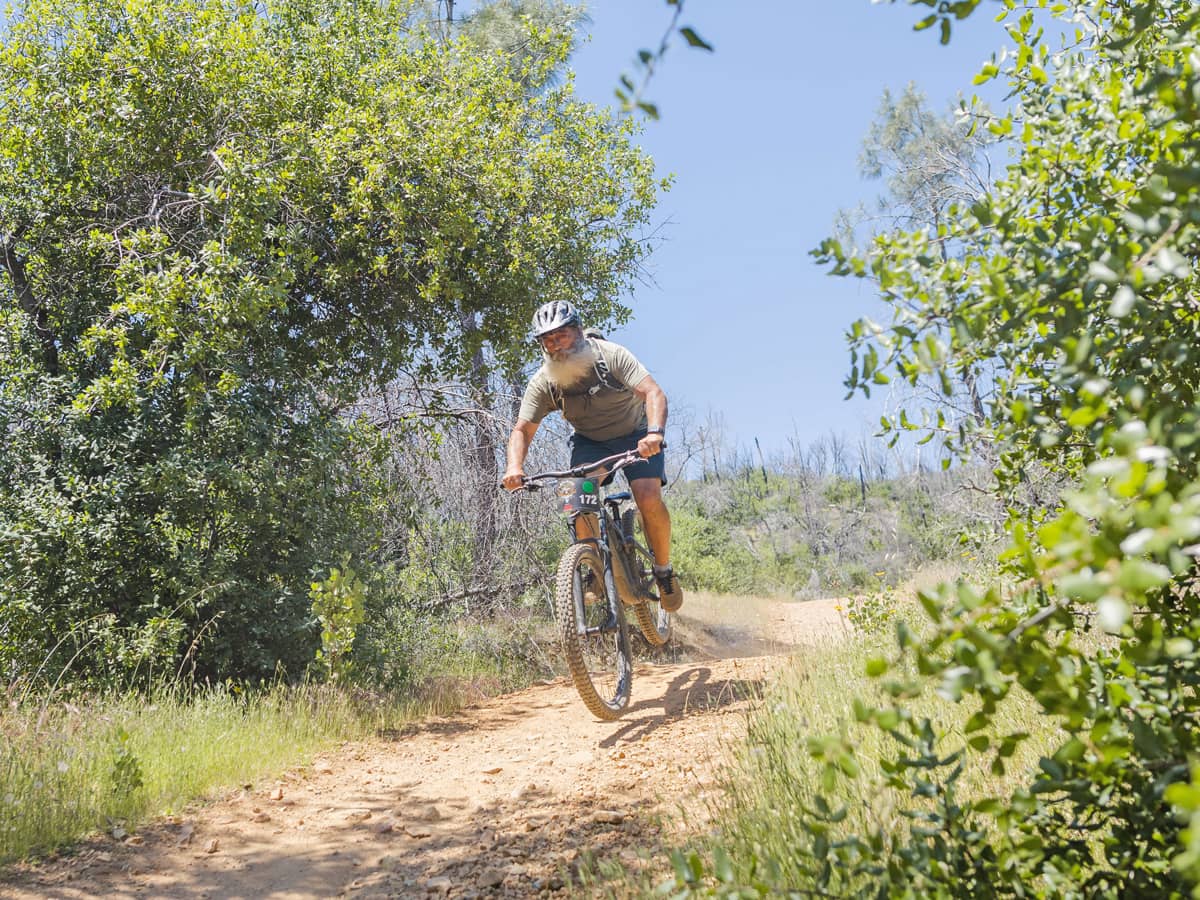A Fresh Look at Helmet Use
Helmets work, mostly. Here is a fresh look and a personal note.

Pictured: Bilateral partial knee replacement patient Charles C., 63, mountain biking after his surgeries.
If you are moving on pavement, you will eventually fall and possibly hit your head. Often not even of your own fault.
1,084 bicyclists were killed in crashes with motor vehicles in 2022 alone1. Eighty-nine percent of these deaths were among people 20 and older1. This number will increase dramatically with the ubiquitous use of electric bikes among school-age children.
I was struck by a car while on my ElliptiGO earlier this summer. My helmet cracked but saved my life. With that experience in mind, I took a look at the most recent data:
- Helmets reduce the risk of head injury by 60% and brain injury by 58%2.
- Helmet use can lead to a 73% reduction in the risk of fatal injuries2.
- Studies estimate that universal helmet use by children ages 4 to 15 could prevent between 135 and 155 deaths annually in the US2.
Helmet design has improved dramatically. Multi-directional Impact Protection System (MIPS) is a technology incorporated into modern bicycle, motorcycle, and snow sports helmets. This is a low-friction layer that allows a slight movement (about 10-15mm) between the helmet shell and the liner during a crash. It is designed to absorb and redirect some of the rotational forces away from the brain. MIPS can reduce these rotational forces by up to 31%3. If half of the cyclists are not wearing helmets and a large portion of the others are wearing older designs or poorly fitting helmets, it’s no wonder that every ER in the country—especially in areas where cycling is popular—is busy with bicycle head injuries.
Head injuries take time to heal. Most concussions are a result of brain trauma so severe that it produces initial swelling, loss of consciousness (sometimes), and almost always a loss of brain horsepower for some period of time. What we don’t know is how much loss, how long the trauma truly lasts, and what the long-term consequences are. Current brain injury research, from trauma centers and the military, is showing that even small concussions (especially if they are repetitive, such as near gunfire and mortar blasts) can lead to consequential brain disease later in life.
Initial treatment involves brain rest, memory and thought retraining, and possibly nutrition that supports inflammation reduction. The specific data on treatment and outcomes, however, are weak.
Logical behavior calls for brain injury prevention. While new MIPS helmets are more expensive than the old Styrofoam buckets, they are super cheap compared to the cost of a brain injury.
I am grateful for my helmet. I have now bought all new ones, for myself and my family. I urge you to do the same.
- Insurance Institute of Highway Safety. Fatality Facts 2022: Bicyclists. Insurance Institute for Highway Safety (IIHS). Published June 2024. Accessed August 23, 2024. https://www.iihs.org/topics/fatality-statistics/detail/bicyclists#:~:text=A%20total%20of%201%2C084%20bicyclists
- Bicycle Helmet Safety Institute. Bicycle Helmet Statistics. Helmets.org. Published 2013. https://helmets.org/stats.htm
- Bottlang, M., Rouhier, A., Tsai, S. et al. Impact Performance Comparison of Advanced Bicycle Helmets with Dedicated Rotation-Damping Systems. Ann Biomed Eng 48, 68–78 (2020). https://doi.org/10.1007/s10439-019-02328-8
